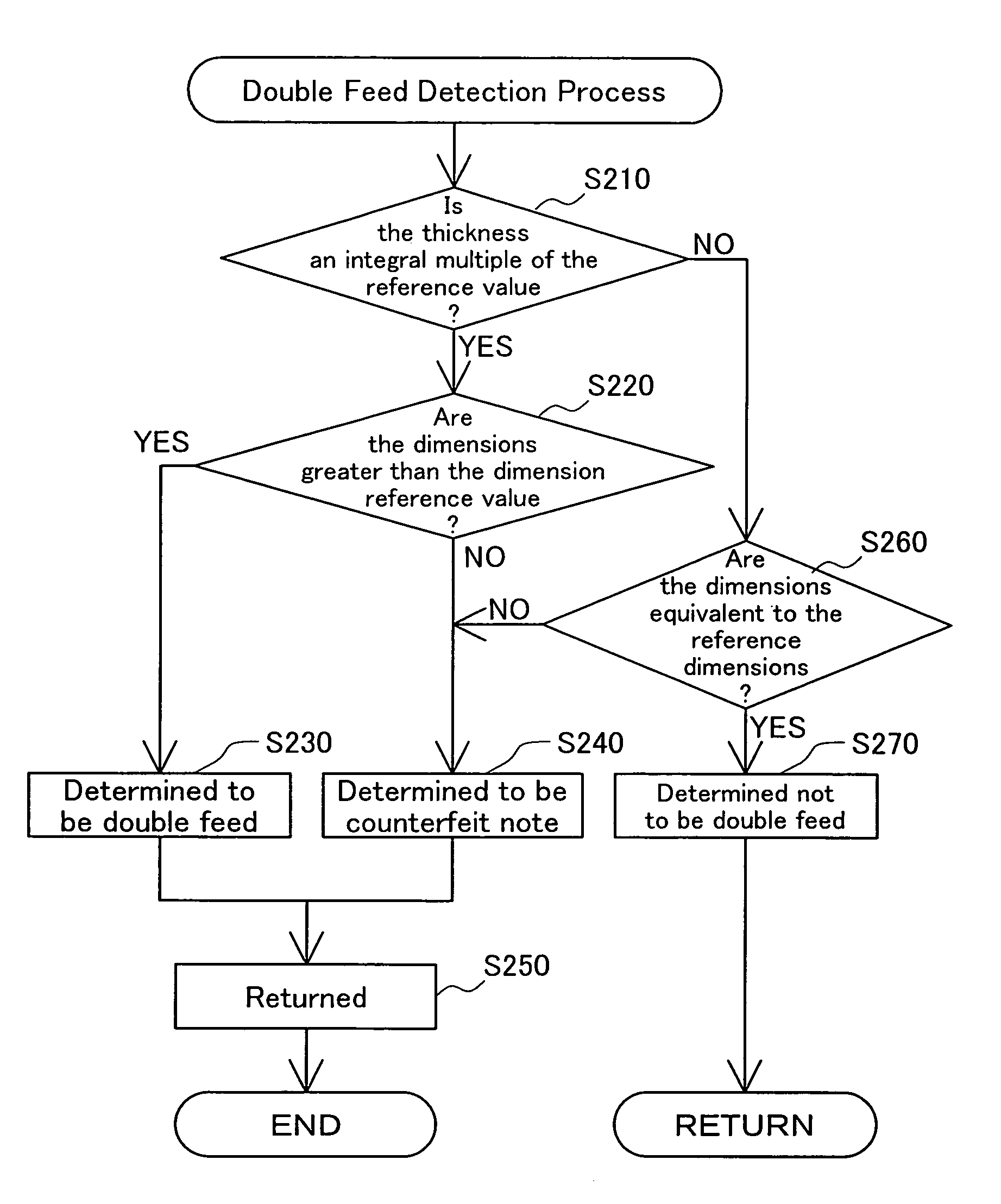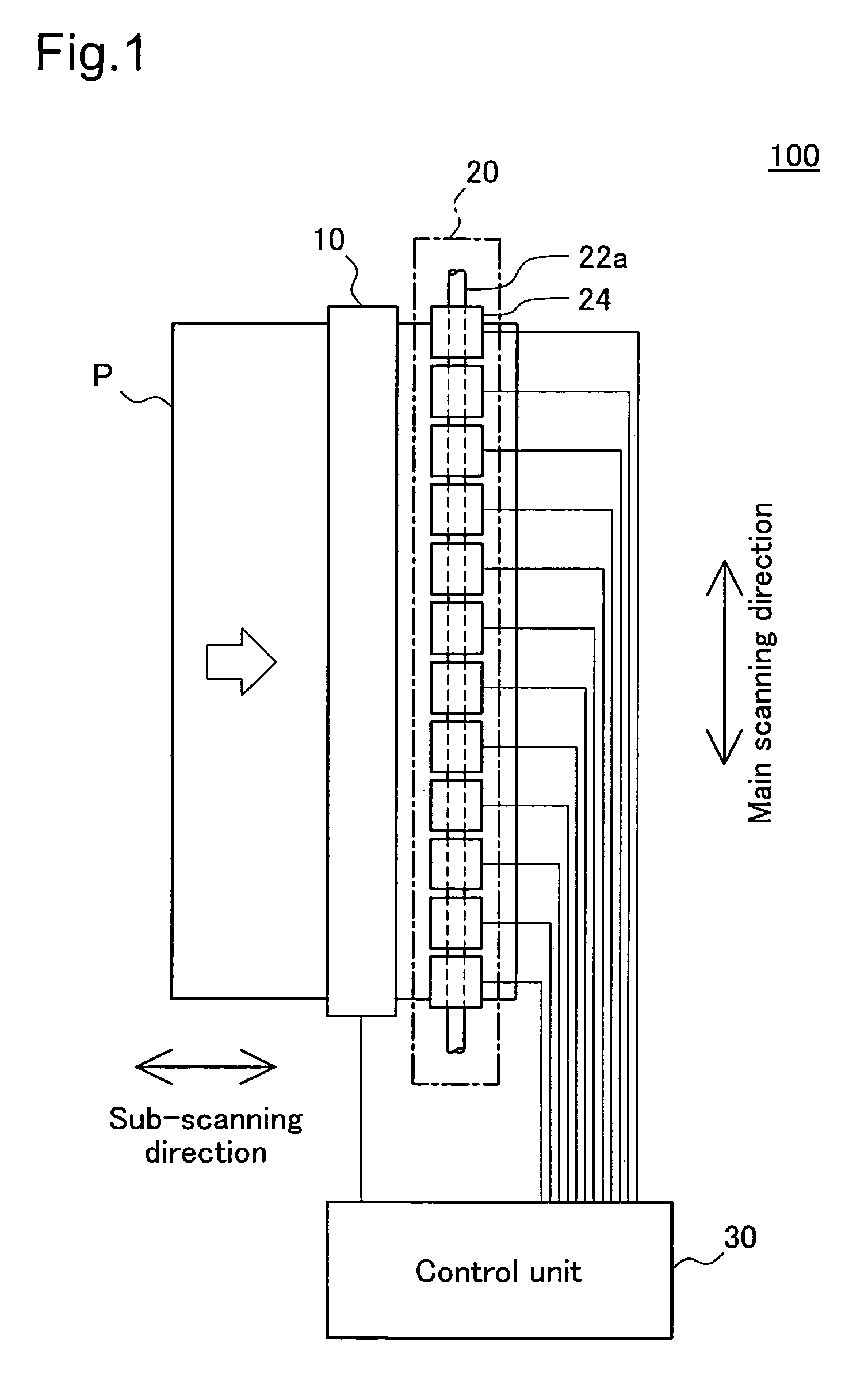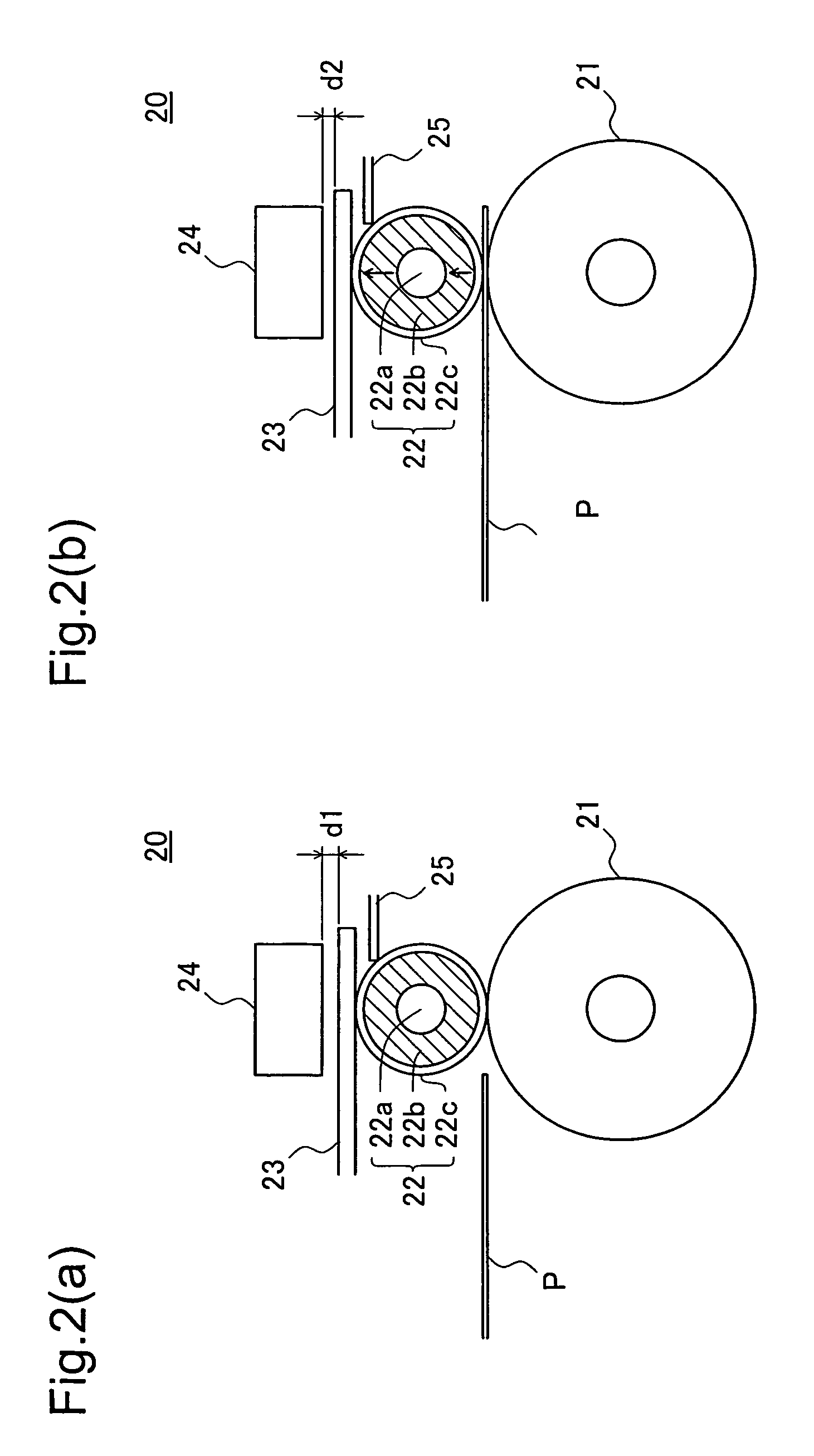Bill discriminating apparatus
a bill and discrimination technology, applied in the field of bill discrimination apparatus, can solve the problem of not being able to discriminate these types of bills with good precision, and achieve the effect of improving accuracy and good precision
- Summary
- Abstract
- Description
- Claims
- Application Information
AI Technical Summary
Benefits of technology
Problems solved by technology
Method used
Image
Examples
example 1
F1. Variation Example 1
[0080]FIG. 12 shows the schematic structure of a thickness detection mechanism 20A as a variation example. The same as the thickness detection mechanism 20 shown in FIG. 2, the thickness detection mechanism 20A shows the state seen from the side (main scanning direction).
[0081]The thickness detection mechanism 20A comprises a detection roller 22d and an arm 23a of this detection roller 22d in place of the detection roller 22 and plate spring 23 that form the thickness detection mechanism 20. Then, the detection roller 22d is supported on the arm 23a by the axis 3c, and the arm 23a is supported on the thickness detection mechanism 20A by the axis 23b. The axis 23b is common to twelve arms 23a. The structure other than this is the same as for the thickness detection mechanism 20.
[0082]By detecting changes in the electrostatic capacity of the gap between the sensor 24 and the arm 23a, the sensor 24 is able to detect changes in the distance d between the sensor 24...
example 3
F3. Variation Example 3
[0085]With the aforementioned embodiment, the threshold value tht shown in FIG. 7 is set so that it may be set freely according to the thickness of the tape T. It is also possible to have the discrimination unit 33 equipped with a threshold value setting unit for automatically setting the threshold value tht. This threshold setting unit could, for example, be made so as to set the threshold value tht based on statistical analysis of, for example, detected thickness distribution data, or of the difference between the detected thickness distribution data and the reference thickness distribution data (e.g. maximum value, minimum value, average value, variance, deviation, etc.). By working in this way, it is possible to further improve the discrimination precision.
F4. Variation Example 4
[0086]With the aforementioned embodiments, the corrected distribution data generating unit 333 was made to correct thickness distribution data based on the conveyance position, but...
PUM
 Login to View More
Login to View More Abstract
Description
Claims
Application Information
 Login to View More
Login to View More - R&D
- Intellectual Property
- Life Sciences
- Materials
- Tech Scout
- Unparalleled Data Quality
- Higher Quality Content
- 60% Fewer Hallucinations
Browse by: Latest US Patents, China's latest patents, Technical Efficacy Thesaurus, Application Domain, Technology Topic, Popular Technical Reports.
© 2025 PatSnap. All rights reserved.Legal|Privacy policy|Modern Slavery Act Transparency Statement|Sitemap|About US| Contact US: help@patsnap.com



